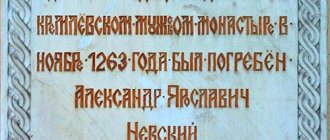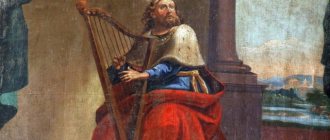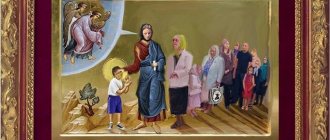The canonical Gospels of Matthew, Mark, Luke and John can be found in most Christian Bibles.
The Gospel (short for the Old English god Spel, i.e. "good news/good news", comparable to the Greek εὐαγγέλιον, Evangelion) [1] is a written account of the career and teachings of Jesus. [2] The term originally meant the Christian message itself, but came to be used for the books in which that message was expounded [3] [Notes 1] in the 2nd century.
Gospels are a genre of early Christian literature claiming to retell the life of Jesus. There are four canonical Gospels in the New Testament, which are accepted as the only authentic ones by the vast majority of Christians, but many others exist or formerly existed and are called the New Testament apocrypha or pseudepigrapha. Some of them left a significant mark on Christian traditions, including iconography.
CONTENT
- 1 Canonical Gospels 1.1 Supposed sources of the Synoptic Gospels
- 1.2 Supposed sources of the Gospel of John
- 2.1 Gnostic Gospels
Canonical Gospels[edit]
Main article: Canonical gospels
See also: New Testament, Christian biblical canons, and Development of the New Testament canon
- Synoptic gospels Gospel of Mark Longer ending of Mark (see also Freer Logion)
Supposed sources of the Synoptic gospels[edit]
Main articles: Two-source hypothesis and four-document hypothesis
- The Gospel of the Cross - John Dominic Crossan's supposed source for the Passion narrative in the Gospel of Mark (and in the Gospel of Peter, see below)
- Source Q - Q
is material common to Matthew and Luke but not found in Mark. - Source M - M
is Matthew's Unique Material - Source L - L
- Luke's unique material
Suggested sources for the Gospel of John[edit]
- Signs of the Gospel - The Story of the Seven Signs
- Conversations The Gospel is a source of discursive material
Origin of the term
The word "gospel" is first used in the writings of the early Christian communities by Paul of Tarsus, in his first letter to the Corinthians [15], probably written in 57:
Γνωρίζω δὲ ὑμῖν, ἀδελφοί, τὸ εὐαγγέλιον
ὃ εὐηγγελισάμην ὑμῖν, κ καὶ παρελάβετε, ἐν ᾧ καὶ ἑστήκατε,
I remind you, brothers, of the Gospel
which I preached to you, which you received and which you persevered.
The gospel is the account of the life and teachings of Jesus. It also talks about the love that God shows for humanity by sending his only Son, Jesus Christ, to redeem the world. This is how he dies for our sins; He is buried, and on the third day he rises from the dead, as he himself predicted. He appears to his twelve apostles (in addition to other people) for forty days. With his death the bonds of love are broken, as the disobedience of the first parents is restored, and the doors of heaven are opened (which were previously closed) for the benefit of all those who follow his word, this is "The love of God is above all and the love of your neighbor as yourself."
In the same “sense” this word is found in the Gospel of Matthew [16] and in the Gospel of Mark. [17] It is possible that the word is a Greek translation of an Aramaic expression used in his sermon by Jesus of Nazareth, but nothing is certain. In total, the expression “gospel” is used seventy-six times in the New Testament. It is noteworthy that sixty of them appear in the epistles of Paul and that the term is not mentioned in the Gospel of John and in the Gospel of Luke, although it appears in the Acts of the Apostles, attributed to Lucas. The number of mentions of each term is as follows: [18]
| Finished | Gospel of Matthew | Gospel of Mark | Gospel of Luke | Acts of the Apostles | Gospel of John |
| Gospel ( Evangelion ) | 4 | 8 | 0 | 2 | 0 |
| Evangelize ( evangelizō ) | 1 | 0 | 10 | 15 | 0 |
It has been suggested that Hellenistic Christian communities adopted the term "gospel" from the cult of the emperor. There is an inscription dedicated to Augustus at Priene, dated 9 BC. C., in which the word appears in a meaning very similar to that which the Christians later gave it; After the celebration of the apparition ( epifanina
) of this deified emperor as the savior (
soter
) of mankind, this text ends as follows:
The birth of God was good news for the world ( Evangelion
), which came for him.
The terminology used in Priene is also found in other similar inscriptions, which has led some authors to consider it highly likely that the author of Mark knew this type of language, given the parallels found at the beginning of this Gospel. [19] In any case, the word was often used in earlier literature in Greek, including the first translation of the Bible into that language, known as the Bible of the Seventy.
Apocrypha and pseudepigrapha[edit]
Main articles: Apocrypha and Pseudepigrapha
Gnostic Gospels[edit]
Main article: Gnostic Gospels
- Gospel of Thomas - The Gospel of Thomas (also known as the Coptic Gospel of Thomas) is a non-canonical gospel of sayings.
- Marcion's Gospel - 2nd century, potentially an edited version of the Gospel of Luke or a pre-Luke document (see: Marcionism)
- Gospel of Basilides - compiled in Egypt around 120-140. AD, is considered a Gnostic harmony of the canonical gospels.
- Gospel of Truth (Valentinian) - mid-2nd century, departed from earlier Gnostic works by recognizing and defending the physicality of Christ and His resurrection.
- Gospel of the Four Heavenly Kingdoms - mid-2nd century, considered Gnostic cosmology, most likely in the form of a dialogue between Jesus and his disciples.
- Gospel of Mary - 2nd century
- Gospel of Judas - 2nd century
- Greek Gospel of the Egyptians - second quarter of the 2nd century.
- Gospel of Philip
- Pseudo-Gospel of the Twelve - A gospel in Syriac called the Gospel of the Twelve, this work is shorter than the regular Gospels and appears to be different from the lost Gospel of the Twelve. [4]
- The Gospel of Perfection is a 4th century Ophite poem that is mentioned only once in a single patristic source, the Epiphany,[5] and is mentioned once in the 6th century Syriac Gospel of the Infancy.
- Coptic Gospel of the Egyptians, also called the Holy Book of the Great Invisible Spirit
Judeo-Christian Gospels[edit]
Main article: Judeo-Christian gospels
- Gospel of the Jews
- Gospel of the Nazarenes
- Ebionite Gospel
- Gospel of the Twelve
Infancy Gospels[edit]
- Armenian Gospel of the Infancy [ link needed
] - Proto-Gospel of Jacob
- Libellus de Nativitate Sanctae Mariae (Gospel of the Nativity of Mary)
- Gospel of Pseudo-Matthew
- The story of Joseph the Plotnik
- Infant Gospel of Thomas
- Latin Gospel of the Infancy (Arundel 404) [ citation needed
] - Syriac Infancy Gospel
Other Gospels[edit]
- Gospel of Mary's Lot (Coptic collection of 37 oracles; c. 500 AD)[6]
Partially preserved Gospels[edit]
- Gospel of Peter
Fragmentary surviving Gospels[α][edit]
- Gospel of Eve - Mentioned only once by Epiphanius around 400 AD, who retains a single brief passage in the quotation.
- Gospel of Mani - 3rd century - attributed to the Persian Mani, founder of Manichaeism.
- The Gospel of the Savior (also known as the Unknown Berlin Gospel) is a highly fragmentary 6th century manuscript based on a late 2nd or early 3rd century original, a dialogue rather than a narrative, largely Gnostic in character in that salvation depends on the possession of secret knowledge
- The Coptic Gospel of the Twelve is a work in Coptic from the late 2nd century - although often equated with the Ebionite Gospel, it appears to be an attempt to retell the Gospel of John along the lines of the Synoptics; it contains many quotations from the Gospel of John.
Reconstructed Gospels [β] [edit]
- The Secret Gospel of Mark is a suspicion: the only source it mentions is considered by many to be a modern forgery, and it disappeared before it could be independently verified.
- The Gospel of Matthew is a lost text from the apocrypha of the New Testament. The content can be guessed from the descriptions in the writings of the church fathers.
Lost Gospels[edit]
- Gospel of Cerinthos - about 90-120. AD - According to Epiphanius [7], this is a Hebrew gospel identical to the Ebionite Gospel, and appears to be a truncated version of the Gospel of Matthew according to the Hebrews.
- Gospel of Apelles - mid to late 2nd century, further edited version of Marcion's edited version of Luke.
- Gospel of Valentine [a]
- Gospel of the Encratites [b]
- Gospel of Andrew - mentioned only by two 5th century sources (Augustine and Pope Innocent I), who consider it apocryphal[c]
- The Gospel of Barnabas - This work is mentioned only once, in the 5th century Edict of Gelasius, who calls it apocryphal.
- Gospel of Bartholomew - mentioned only in two 5th century sources, which consider it apocryphal. [d]
- Gospel of Hesychius - mentioned only by Jerome and the Edict of Gelasius, in which it is mentioned as apocryphal. [e]
- Gospel of Lucius - mentioned only by Jerome and the Edict of Gelasius, which mentions it as apocryphal.
- Gospel of Merinth [f] - mentioned only by Epiphanius; probably the Gospel of Cerinthos and confusion due to a scribal error.
- An unknown number of other Gnostic gospels, not named. [gram]
- The Gospel of the Adversary of the Law and the Prophets [9]
- Memoirs of the Apostles - a lost narrative of the life of Jesus, mentioned by Justin Martyr, passages quoted by Justin, may have arisen from the Gospel harmony of the Synoptic Gospels compiled by Justin or his school.
Fragments of possibly unknown or lost (or existing) gospels [α][edit]
- Egerton Papyrus 2 is a late 2nd century manuscript, possibly an earlier original; contents consistent with John 5:39–47, 10:31–39; Matthew 1:40–45, 8:1–4, 22:15–22; Mark 1:40–45, 12:13–17; and Luke 5:12–16, 17:11–14, 20:20–26, but differ in text; also contains an incomplete account of miracles that has no equivalent in the canonical Gospels.
- The Faiyum fragment is a fragment of about 100 Greek letters in a 3rd century script; the text appears to correspond to Mark 14:26–31.
- Oxyrhynchus Papyri - fragments No. 1, 654 and 655 appear to be Thomas fragments; No. 210 refers to, but is not identical to, Matthew 7:17–19 and Luke 6:43–44; #840 contains a short vignette about Jesus and the Pharisees, not found in any known gospel, the original text is probably mid-2nd century; #1224 consists of paraphrases of Mark 2:17 and Luke 9:50.
- The Gospel of Jesus' Wife is a modern deception based on the Gospel of Thomas [10] [11]
- Papyrus Berolinensis 11710 is a 6th-century Greek fragment, possibly from an apocryphal gospel or amulet based on John.
- Papyrus Cairensis 10735 - 6th or 7th century Greek fragment, possibly from a lost Gospel, may be a sermon or commentary.
- Papyrus Merton 51 - excerpt from the apocryphal gospel or sermon on Luke 6:7
- Strasbourg fragment - fragment of a lost gospel, probably associated with the Acts of John
Banned Gospels
If you follow the chronology of biblical events, then one of the first to follow is Fr. This book describes the birth, childhood and youth of the mother of Jesus Christ, Mary, until the birth of the Savior. This version of the Gospel contains many passages from other texts canonized by the church. Based on the title of this book, it is clear that Jacob, the son of Jesus’ father from his first marriage, claims to be its author. However, this version does not stand up to criticism, since the writer was clearly unfamiliar with Jewish traditions. This is evidenced, for example, by the fact that, according to the text, three-year-old Mary was taken to the temple, where she lived until she was 12 years old.
Another scripture, the “Gospel of Childhood,” allegedly written by the Apostle Thomas, tells about the childhood of Jesus himself. In this text, little Jesus appears to the reader as a kind of superman, and not always kind. It can purify water, or it can also “dry up” a child who tries to stir up the purified pond again. And adults who complain about Christ's tricks suddenly go blind. However, according to scientists, Thomas cannot be considered the author of this Gospel, since according to some details of the narrative one can easily conclude that the writer does not have the slightest idea about the life of the Jews.
In addition to these two apocrypha, the Gospels of Peter, Mary, Philip and Barnabas, the Gospels of Eve, Nicodemus and Judas, the Gospel of the Egyptians, the Gospel of the Twelve, the Gospel of the Hebrews and other works are also known.
Modern Gospels[edit]
- The Gospel of Jesus Christ Aquarius (1908)
- The Book of Mormon (Another Testimony of Jesus Christ) (1830)
- The Crucifixion of Jesus by an Eyewitness (1907) [h]
- Essene Gospel of Peace (1937; 1974)
- The Fifth Gospel (1908, Steiner)
- The Fifth Gospel (1956, Naber) [j]
- The Fifth Gospel (1993, Vandenberg), novel
- The Gospel Given in Ares (1974)
- The Gospel of Jesus by Gabriele Wittek (1977) [k]
- The Gospel of Josephus (1927)
- Gospel of the Childhood of Our Lord Jesus Christ from St. Peter (1904) [l]
- Gospel of the Holy Twelve (1881)
- Life and Morals of Jesus (1820)
- Joshua Nazir (1917) [m]
- The Mystical Life of Jesus (1929) [n]
- The Unknown Life of Jesus Christ (1894)
- The Urantia Book (1955)
- Ur-Gospel of the Essenes (1848) [o]
- The Great Gospel of John (1851–1864)
- Jesus Scroll (1972)
- Poem of a Man-God (1956)
Notes[edit]
- Mentioned by Tertullian in Adversus Valentinianos, according to Irenaeus, it is the same as the Gospel of Truth.
- Epiphanius attributed the gospel to the Encratite sect. However, it is more likely that he referred to the Gospel of Tatian.
- Augustine and Innocent mentioned it only once, but knew nothing about it. If this is the same as the Acts of Andrew, then it was written around 150-250 AD and is not lost, and is a sort of Christian retelling of the Odyssey, only with Andrew in the title role.
- Jerome mentions it twice: Catulus. Script. Eccles. in Panton. and Præfat. in Comm. in mat. He is also mentioned once in the Edict of Gelasius.
- This phrase occurs in the Edict of Gelasius, in which certain gospels are condemned by this title. What they were is unknown. Jerome speaks of “those books which go under the names of Lucian and Hesychius and are revered because of the perverse humor of some.”
- The Gospel of Merinthus is mentioned only by Epiphanius as one of those false gospels which he believes were written in the time of the Apostles, mentioned by Luke in the Gospel of Luke 1:1 "how not to be a true and genuine account." Fabricius suggests that Merinthos and Cerinthos are the same person, and that Cerinthos was transformed into Merinthos by teasing or reproach. Although Epiphanius turns them into two different persons, he nevertheless declares that he is unsure of the heresy of the Cerinthians. He said: “The Cerinthians are also called Merinthians, as we see from the reports we have; but whether this Cerinthos was also called Merinthos, his co-worker, God knows" [8]
- The Gnostics had different Gospels. Epiphanius speaks of their writing, "The Revelation of Adam and Other False Gospels."
- The Eyewitness Gospel is a gospel written by Elsie Louise Morris and/or Benjamin Fish Austin. The Gospel is an ancient manuscript found in the old library of Alexandria that gives a detailed and graphic account of Jesus as Jesus' friend. The Gospel says that Jesus did not die on the cross, but died six months later. The Gospel makes many references to the Essenes and is said to have been written by an elder of the Essene order who was a close friend of Jesus. The document was discovered in a building in Alexandria, but the document has since disappeared. It was published in 1907 by John Richardson and then by the Holmes Book Company in 1919. This information was obtained from 4Enoch.org
- The Fifth Gospel by Rudolf Steiner is another Gospel derived from the Akasha. The gospel is presented in the form of 13 lectures. The book contains Zoroastrian themes along with Christian themes. The Gospel states that the Lord's Prayer is based on an ancient pagan prayer that Jesus received from Ahriman. Steiner claims that the Gospel can be read in the Akashic Records. The authenticity of the Gospel has been questioned because Levi Dowling and Edgar Cayce wrote stories about the life of Jesus from the Akashic Records. Much of the text can be read on Google Books under the title The Fifth Gospel: From the Akashic Records.
- Hans Naber (or Kurt Berna) was a soldier during World War II who claimed to have received a message from Jesus Christ about the Shroud of Turin and that he did not die on the cross. He argued that there was too much blood on the shroud and that corpses did not bleed, so the person was probably alive or dying. He published a series of books trying to prove that Jesus did not die on the cross, but survived and traveled to India. The Fifth Gospel (Das Fünfte Evangelium) was a book in which he tried to prove that Jesus traveled to India with Mary Magdalene and Thomas the Apostle.
- Grabriele Wittek, founder of the new religious movement of universal life, published the Gospel as a restoration of the Gospel of the Twelve Saints. The full title of the book is This Is My Word - Alpha and Omega: The Gospel of Jesus.
The revelation of Christ, which true Christians around the world have come to know. The Gospel can be read online from Das-Wort in Universelles Leben. - Catulle Mendes was a French poet who claimed to have found the Gospel written by the Apostle Peter. He said that he found the manuscript in St. Wolfgang's Abbey. Unlike other biblical hoaxes, Mendes presented the manuscript. The manuscript was written in the old Latin language used by the Romans. However, the manuscript was quickly proven to be a forgery as it was written by Mendes. The Gospel is the Infant Gospel attributed to the Apostle Peter. It was originally written in Latin by Mendes, but was eventually translated into French by Mendes. The title of the original book is L'Evangile de l'enfance de Notre Seigneur Jésus Christ selon Saint Pierre, mis en français par Catulle Mendès d'après le manuscrit de l'Abbaye de Saint Wolfgang, or the Gospel of the Infancy of Our Lord Jesus Christ from Saint Pierre, translated into French by Catulle Mendes from the manuscript of the Abbey of St. Wolfgang.
- Otoman Zar Adusht Hanish, founder of the Mazdaznan movement published a book called Yehoshua Nazir. He claimed to have received it from various Eastern mysterious sources. The book was first published in 1917 under the title Yehoshua Nazir;
Jesus of Nazareth; life of Christ. Followers of Mazdaznan consider the book to be sacred scripture. The text is available at the Internet Text Archive. - Harvey Lewis was a famous Rosicrucian author and author of The Mystical Life of Jesus. The gospel was supposedly inspired by the Aquarian Gospel. The book is a collection of records about Jesus extracted from the ancient monasteries of the Essenes and the Rosicrucian order. Lewis allegedly traveled with a group of explorers through Palestine and Egypt, visiting holy sites and collecting information. The book states that Jesus became a priest and a secret priest, and talks about the teachings and secret facts about the resurrection. You can read a preview of the book on Amazon.
- Friedrich Clemens Gehrke was a German writer and journalist best known for his revision of Morse code in 1848. In 1867 he published the Ur-Gospel of the Essenes
(Urevangelium der Essäer).
It was also known as the Fifth Gospel
(Das Fünfte Evangelium) and later as
Jesus of Nazareth - The Life, Teachings and Natural Death of the Wise of the Wise.
Reality retold and dedicated to the German people (Jesus der Nazarener - Des Weisesten der Weisen Leben, Lehre und natürliches Ende. Der Wirklichkeit nacherzählt und dem deutschen Volke gewidmet.) The book has not been translated into English, and the full text in German is available in the text archive Internet under the title Jesus der Nazarener.
- α.
Saved from original sources. - β.
Compiled from secondary sources and commentaries.
- For the Gospel as a Christian message in the Gospel article
Epiphany Cathedral in Yelokhov
Knowing yourself is already a lot. To touch the knowledge of the secrets of the Church is already a lot. If a person understands that the second is related to the first, and that the spiritual experience of the Church is not only
the treasury of past centuries, but, above all, a hand extended from the eternal to himself - that means a miracle has happened. Christ quietly knocked on another soul,” said Patriarch Alexy II of Moscow and All Rus'.
The four Gospels tell the same story about the life and teachings of Christ the Savior.
About His miracles, suffering on the cross, death and burial. About His Resurrection from the dead and Ascension into heaven. Mutually complementing and explaining each other, they constitute a single book. Although the time at which the Gospels were written cannot be determined with absolute certainty, it is certain that they were all written in the second half of the 1st century.
This is clear from the fact that a number of writers of the 2nd century make many references to them and quote verbatim extracts from them. Thus, the Hieromartyr Ignatius the God-Bearer, in his epistles dating back to 107 A.D., talks about the Gospel and quotes it.
In the letter of the Apostle Barnabas, written around the year 76, we find quotes from the Gospels of Matthew and Luke. Consequently, this alone suggests that these Gospels were written earlier.
Scientists believe that the Gospel of Matthew was created first - no later than 50 - 60 AD. Its compiler, according to ancient church tradition, is the Apostle Matthew, one of the twelve apostles. He belonged to the leaders of the most ancient Church of Jerusalem, headed by James, the brother of the Lord.
The main gospel tradition was enshrined in the Jerusalem Church, which formed the basis of the four canonical Gospels. The Evangelist Matthew composed the Gospel mainly for Jews converted to Christ. It used many concepts familiar to the Jews.
In the area of moral teaching, the evangelist highlights images of Christian piety - the Sermon on the Mount. It is the moral moment that Matthew particularly emphasized in Christ’s sermon. Matthew, more decisively than other evangelists, pushes away from Judaism, denouncing the Jewish leaders.
Evangelist Matthew consistently sets out the gospel of Christ, combining individual teachings of Christ into large, coherent speeches. The moral teaching of the first Gospel is centered around the theme of the Kingdom of Heaven, as well as around the idea of the Church as spiritual Israel.
The second Gospel, the Gospel of Mark (the shortest of the four), was presumably compiled in 67-68. Many ancient writers believed that it was written in Rome: its Greek language is replete with Latin words.
The Gospel is distinguished by its extraordinary liveliness and colorfulness. This allows researchers to believe that there is an eyewitness account behind the narrative. Evangelist Mark was a disciple of the Apostle Peter. Perhaps he himself witnessed the Passion of Christ. Scientists believe that the second Gospel is a recording of the Roman sermon of the Apostle Peter, made by the Apostle Mark. Therefore, the Gospel of Mark is also spoken of as the Gospel of Peter. The main content of the Gospel is the miracles of Christ.
In moral teaching, the emphasis is on faith. The contrast between God and the world runs through the entire Gospel. In the suffering of Christ this contrast reaches its utmost acuteness. Even in the very crucifixion of Christ His Divine dignity is revealed. Jesus' victory over the world is sealed in His Resurrection.
From the book “The Mystery of Orthodoxy.” To be continued.
THE SECRET OF THE FALL. TREE OF LIFE
THE SECRET OF THE FALL. FIRST COMMANDMENT
THE SECRET OF THE FALL. GOOD AND EVIL
THE SECRET OF THE FALL. EXILEMENT FROM PARADISE
THE SECRET OF THE FALL. THE FIRST HUMAN SETTLEMENTS ON EARTH
THE MYSTERY OF THE INcarnation. MAN OF GOD
THE MYSTERY OF THE INcarnation. THE MIRACLE OF THE RESURRECTION
CHRIST IS RISEN IN TRULY
THE MIRACLE OF THE RESURRECTION. CONTINUATION
Footnotes [edit]
- Woodhead 2004, p. 4. sfn error: no target: CITEREFWoodhead2004 (help)
- Tuckett 2000, page 522. sfn error: no target: CITEREFTuckett2000 (help)
- Cross and Livingstone 2005, p. 697. sfn error: no target: CITEREFCrossLivingstone2005 (help)
- Harris, Jr., ed. The Gospel of the Twelve Apostles, together with the Apocalypses of each of them
(Cambridge, 1900). - Pan. Hæres. 26. § 2
- Jarus, Owen (3 February 2015). "Newfound" Gospel of Mary Discovered in Ancient Texts". Living Science
. Retrieved February 8, 2015. - Pan. Haer. 28.5.1., I 317.10
- (Jones, A New and Complete Method of Establishing the Canonical Authority of the New Testament)
- Augustine, Contra Adversarium Legis et Prophetarum
, 2.3.14. - Ariel SABAR. "The Incredible Tale of Jesus' Wife". Atlantic
. Retrieved June 18, 2016. - Bernhard, Andrew (11 October 2012). "How the Gospel of Jesus' Wife May Have Been Created" (PDF). gospels.net. Archived from the original (PDF) on March 5, 2016. Retrieved June 11, 2022.









